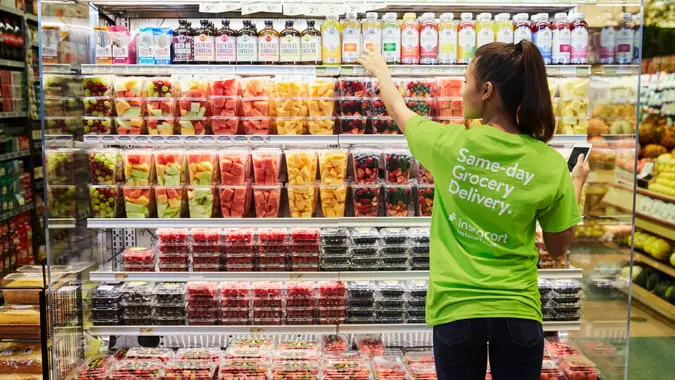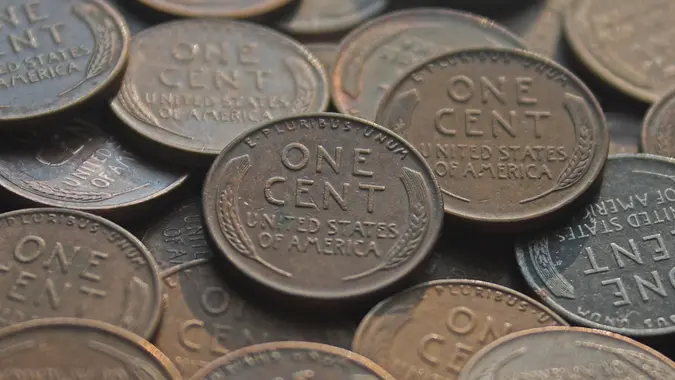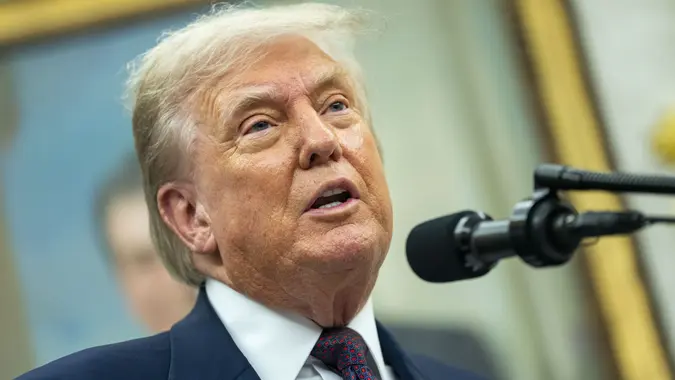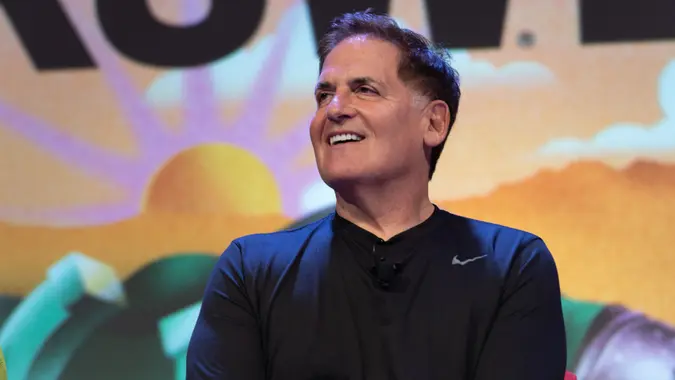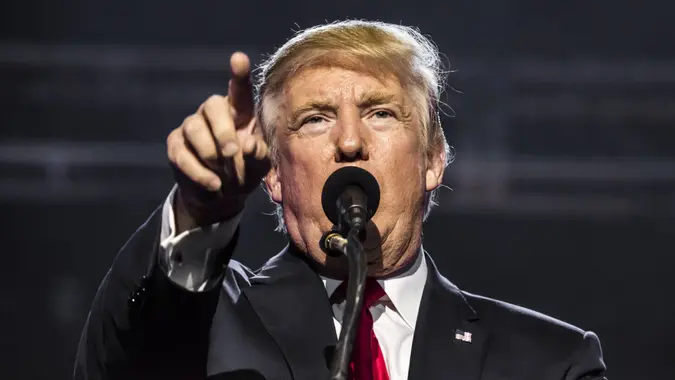Trump Says Grocery Prices Are Down — What Do the Numbers Say?

Commitment to Our Readers
GOBankingRates' editorial team is committed to bringing you unbiased reviews and information. We use data-driven methodologies to evaluate financial products and services - our reviews and ratings are not influenced by advertisers. You can read more about our editorial guidelines and our products and services review methodology.

20 Years
Helping You Live Richer

Reviewed
by Experts

Trusted by
Millions of Readers
On April 29, 2025, President Donald Trump sat down with ABC journalist Terry Moran in the Oval Office to discuss his first 100 days in office. When asked about prices, Trump said, “Look, since I came in gasoline is down, groceries are down, egg prices are down — many things are down, just about everything.”
Unfortunately for Trump — and the American consumer — most analysts, as well as the latest economic data, would disagree. While it’s true that prices have come down in a few specific categories — fresh vegetable prices were 3.0% lower in March, compared to March 2024, according to the U.S. Department of Agriculture (USDA) — most grocery prices were up and predicted to go higher.
Grocery Price Increases
For instance, the USDA projects overall food prices to increase by 3.5% in 2025, with food-at-home prices rising by 3.3%. That’s more than the historical average annual increase of 2.6% from 2005 to 2024.
If you’re a beef lover, expect to pay 6.3% more. And the much-talked-about egg prices? The USDA anticipates a 54.6% increase in 2025, mostly due to the impacts of avian flu outbreaks.
It is true that inflation is lower today than a year ago, but that is not the same as prices going down — the promise that Trump said he would fulfill on day one of his presidency. As David Bieri, an economist at Virginia Tech University, told ABC News, “Prices are still going up — they’re just not going up as rapidly.”
The Effect of Tariffs
Exacerbating the issue are the tariffs imposed by Trump on imports from around the world, most notably Mexico, Canada and China. According to an April 15 report from The Budget Lab at Yale, the tariffs have increased consumer prices by 3.0% in the short run. That translates into a $4,900 per-household cost increase in 2025 if buying habits remain unchanged.
And, according to The Budget Lab’s analysis, even if families adjust their habits, such as switching to store brands or cheaper alternatives, they’ll still pay 1.6% more. That equates to $2,600 per year per household. In other words, even if you downgrade your lifestyle, it’ll still cost you more.
It should be noted that the report applies to all spending, not just groceries, and was published before the 90-day deal to reduce tariffs on China to 30% that was announced May 12. Officially, this is only a pause on tariffs.
So, the bottom line is that no, grocery prices are not down since Trump took office, they are up — along with almost everything else. Moreover, they are expected to go higher. How much higher is difficult to say, though, since tariff policy seems to be fluid.
Editor’s note on political coverage: GOBankingRates is nonpartisan and strives to cover all aspects of the economy objectively and present balanced reports on politically focused finance stories. You can find more coverage of this topic on GOBankingRates.com.
More From GOBankingRates
Sources:
- ABC News, “FULL TRANSCRIPT: Trump’s exclusive 100 days broadcast interview with ABC News.”
- USDA, “Food Price Outlook – Summary Findings.”
- ABC News, “Trump claims grocery and gas prices are falling. Experts say that’s misleading.”
- Yale Budget Lab, “State of U.S. Tariffs: April 15, 2025.”
 Written by
Written by  Edited by
Edited by 




